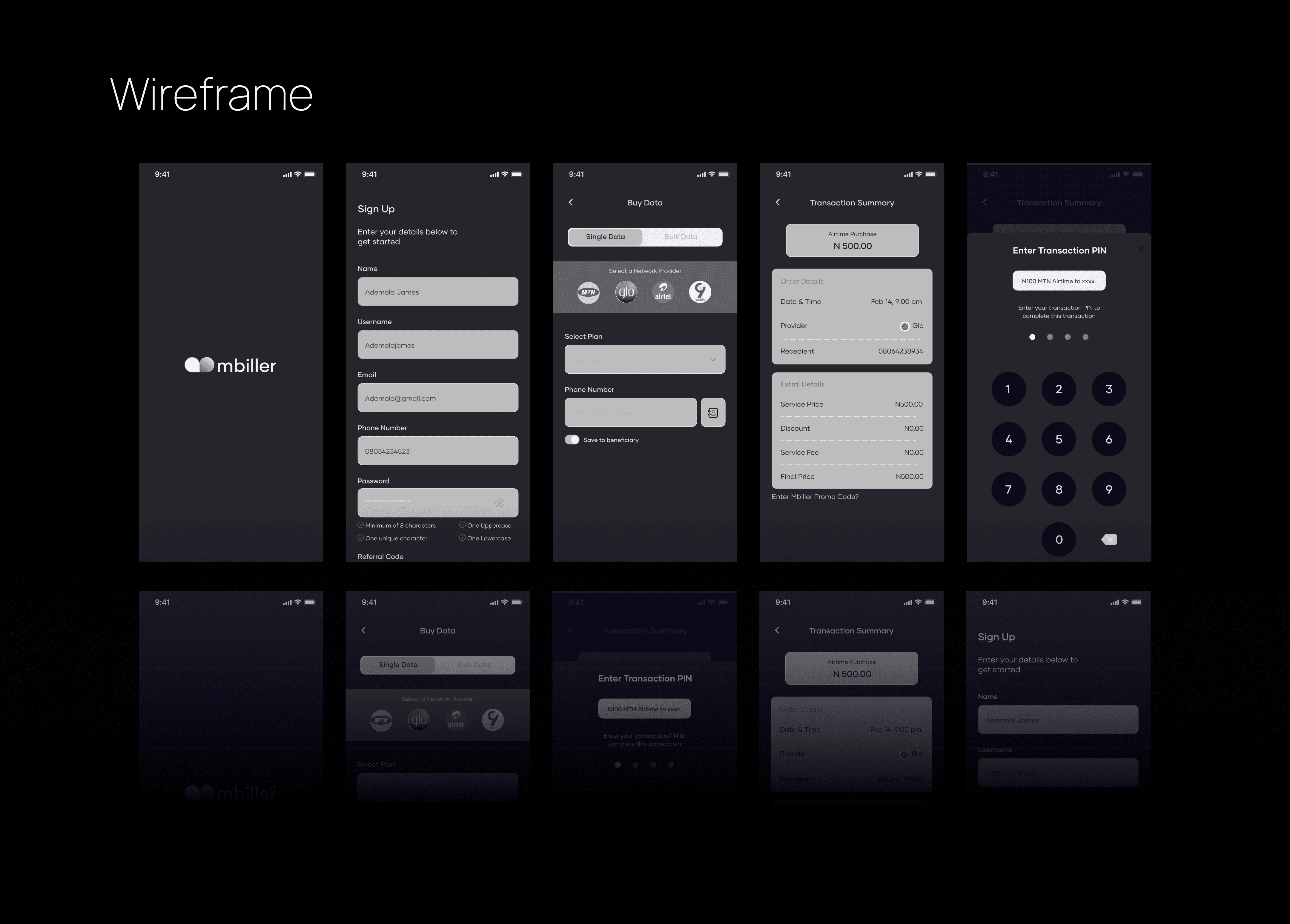Mbiller
Jun 1, 2022
Bill Payment App | Product Design
1. Context
Mbiller is a mobile app that lets users pay bills easily from their smartphones. It connects to the Paystack payment platform, allowing users to fund their wallets via bank transfer or credit card, schedule payments, track their bill history, and receive timely reminders when bills are due.
2. The Challenge
We needed to create an intuitive, user-friendly interface that makes bill payment quick, efficient, and frustration-free. This meant reducing cognitive load, streamlining the payment flow, and ensuring that every feature — from onboarding to notifications — felt effortless for the user.
3. My Role
Led end-to-end product design (UX & UI)
Defined the information architecture and user flows
Created and maintained design system components
Partnered with engineering for smooth handoff and implementation
4. Process
Research
Conducted user interviews to understand how people currently pay bills and where they get stuck
Analyzed competitor apps to identify opportunities for differentiation
Ideation with AI Support
Used generative AI to rapidly explore early UI variations, producing 12 distinct layouts in under 24 hours
This accelerated decision-making by allowing the team to compare options visually before committing to detailed designs
Design
Developed wireframes for wallet funding, bill scheduling, and history tracking
Refined layouts based on usability testing feedback
Applied accessible color contrasts and clear typography for readability
Testing & Iteration
Ran usability tests with 10 target users
Iterated to reduce wallet funding steps from 5 to 3 clicks
Improved bill history navigation by adding quick filters
5. Outcome
Reduced time-to-complete for a bill payment by 40%
Increased successful wallet funding by 25% in the first month after launch
Positive feedback from users praising the app’s simplicity and reminders
6. Key Takeaways
AI can dramatically shorten the exploration phase, giving teams more time to refine high-impact designs
Small usability improvements, like reducing steps or adding filters, can lead to big gains in user satisfaction
Accessibility considerations should be integrated early, not as an afterthought






